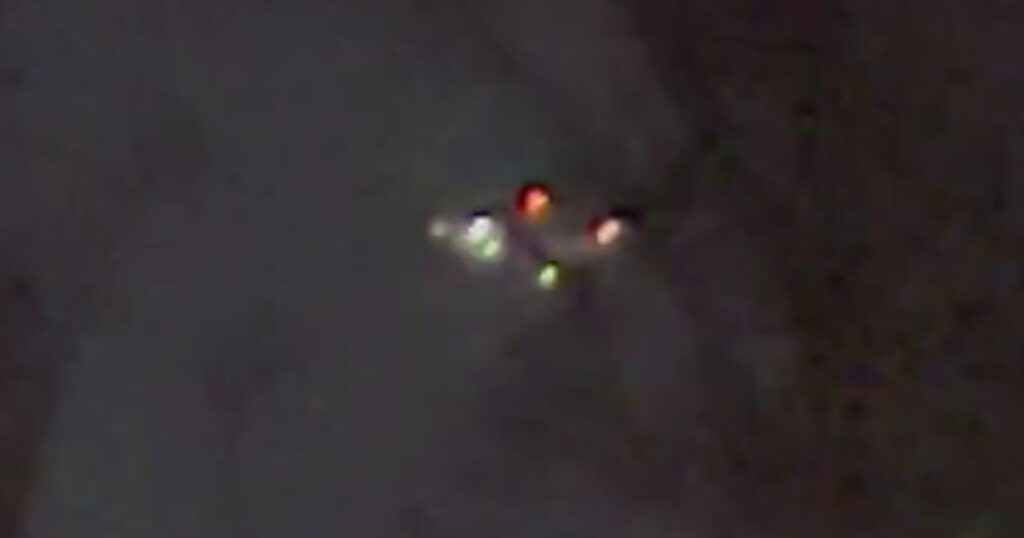The recent surge in drone sightings over the northeastern United States has ignited an array of public concerns, particularly regarding safety and the legality of such aircraft in sensitive airspace, including near military installations. As expressed in a statement from the White House, National Security Council spokesman John Kirby emphasized that the drones operating in the area are “legal and lawful,” as they largely consist of commercial, hobbyist, and law enforcement varieties. This assertion follows widespread inquiries, including remarks from President-elect Donald Trump, who characterized the matter as “an alarming mystery,” highlighting the urgent public demand for more transparency about these aerial incursions. Kirby suggested that some sightings might be misinterpretations of ordinary aircraft or even celestial bodies, potentially deflecting attention from the underlying concerns citizens have about unidentified drones.
Major General Pat Ryder, the Pentagon Press Secretary, elaborated on the situation during an on-the-record press briefing, affirming that military bases experienced unauthorized drone entries but trying to normalize such occurrences. He stated that these incidents are not unexpected given the prevalence of drones in the airspace. Ryder clarified that the drones causing concern are not military-operated, reassuring that there are currently no military operations that involve these unmanned aerial vehicles. He acknowledged the public’s growing unease, underscores that multiple federal agencies are investigating the reports diligently, including the Department of Defense (DOD), Federal Aviation Administration (FAA), and local law enforcement.
Ryder drew a parallel between the presence of unauthorized vehicles near military installations and the drone situation, suggesting that similar to how cars occasionally stray near base gates, drones may inadvertently fly over or near military properties. He asserted that the vast majority of such occurrences do not lead to incidents and that unauthorized drones are typically disposed of without conflict unless a clear threat is posed. Given the registration of over one million drones in the United States and the daily operation of around 8,000 drones, Ryder reinforced that experiencing drone activity is part of the landscape rather than an indication of malevolent behavior.
He highlighted the Department of Defense’s commitment to addressing potential threats posed by drones while mitigating panic. The DOD has acknowledged the challenges presented by unmanned aerial systems and has initiated a counter-drone strategy to elevate defenses, improve understanding of emerging drone trends, and respond rapidly to new threats. This proactive approach aims to bolster security measures without inciting unnecessary fear in the general public. Ryder reiterated the importance of distinguishing between legitimate drone flights and those that may warrant attention or investigation, ensuring that the response remains proportionate to the perceived threat level.
As he responded to further inquiries, Ryder outlined that the military is restricted in the methods it can apply to detect and neutralize drones within the United States, primarily due to privacy and legal constraints regarding domestic operations. While the DOD doesn’t conduct intelligence surveillance on American citizens, it does possess some capabilities to counter drones if they pose a legitimate threat. This may include both passive and active measures, such as disrupting signals or repurposing military drones for interception, albeit within a tightly regulated framework to avoid escalation and preserve operational security.
In conclusion, the current drone activity in the northeastern United States, though raising alarms among the public and officials alike, is largely characterized as legal and commonplace by government spokespeople. Amidst this backdrop, ongoing investigations by various federal bodies reflect the seriousness with which these reports are being approached. The DOD’s strategic planning and operational restraint reinforce when to intervene while acknowledging the prevalence of legal drone use in U.S. airspace. As the situation unfolds, the narrative surrounding drone sightings will be critical, balancing public concern with operational protocols and national security considerations, ultimately aiming to maintain safety without compromising transparency or inflating fears regarding unmanned aerial systems.

